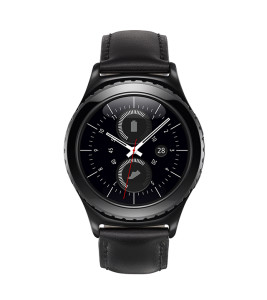 Weather forecasters know that the surest bet is to predict tomorrow; in most cases, it’s going to be more or less like today with a few things changing. Only in rare cases will today be snowing but tomorrow be in the 70s. The further out you go, the more likely things will be different. But tomorrow? A lot like today.
Weather forecasters know that the surest bet is to predict tomorrow; in most cases, it’s going to be more or less like today with a few things changing. Only in rare cases will today be snowing but tomorrow be in the 70s. The further out you go, the more likely things will be different. But tomorrow? A lot like today.
Technology forecasters know that what you predict for tomorrow has really already happened, but most people haven’t seen it yet. No one is going to predict genuine hoverboards (not the Chinese rolling stuff that’ll burn down living rooms around the world for the next few months) until they know that some guy in a lab somewhere has invented anti-grav but hasn’t gotten it to market yet.
So next-year predictions are kind of easy because the wheels are well into motion.
For wristware:
- Expect to see a continued segmentation of the market based on function, UI sophistication, and materials. The price floor of the cheapest wearables will continue to drop, while the more premium ($150-$250) will bring wrist devices that start to estimate (badly) blood pressure and (better) stress levels through galvanic skin response. The quality of software and information analysis will continue to be a major differentiator.
- There will be a clearer divide between standard fitness devices (Fitbit) and devices for dedicated athletes (Garmin and Polar), differentiated mostly through UI.
- More legacy watch makers will make connected devices. The Swiss and other luxury makers will stake out the $1000-$3000 price range, using premium materials and design — some using MMT double-dial movements and others using the increasingly polished Android Wear OS. The Japanese mass marketers will start to be heard from, although not with devices of any particular sophistication.
- More wrist devices will eschew smartphone tethering and connect directly to networks using either WiFi, current versions of Bluetooth, or 3G microSIMs.
- Someone near the end of the year will use watch-borne voice recognition to control smart homes. It could be Apple using Apple TV as a hub. It could be Google using Nest as a hub. It could be someone else using Amazon Echo as a hub. (It’s unlikely, but not impossible, that Amazon itself will sell a wearable device.)
- NFC chips become table stakes for wristbands, if only because they’ve become vastly faster than using chip-and-sign cards in the U.S. The question will become: which payment ecosystem will they use, and how will users be able to tie (and un-tie) their credit accounts with their chips?
(See other parts of this series:
Wearables in 2016: On the Face. We predict rapid adoption by industry and enterprises.
Wearables in 2016: Consolidation Looms. We predict that early investors will start heading for exits.)